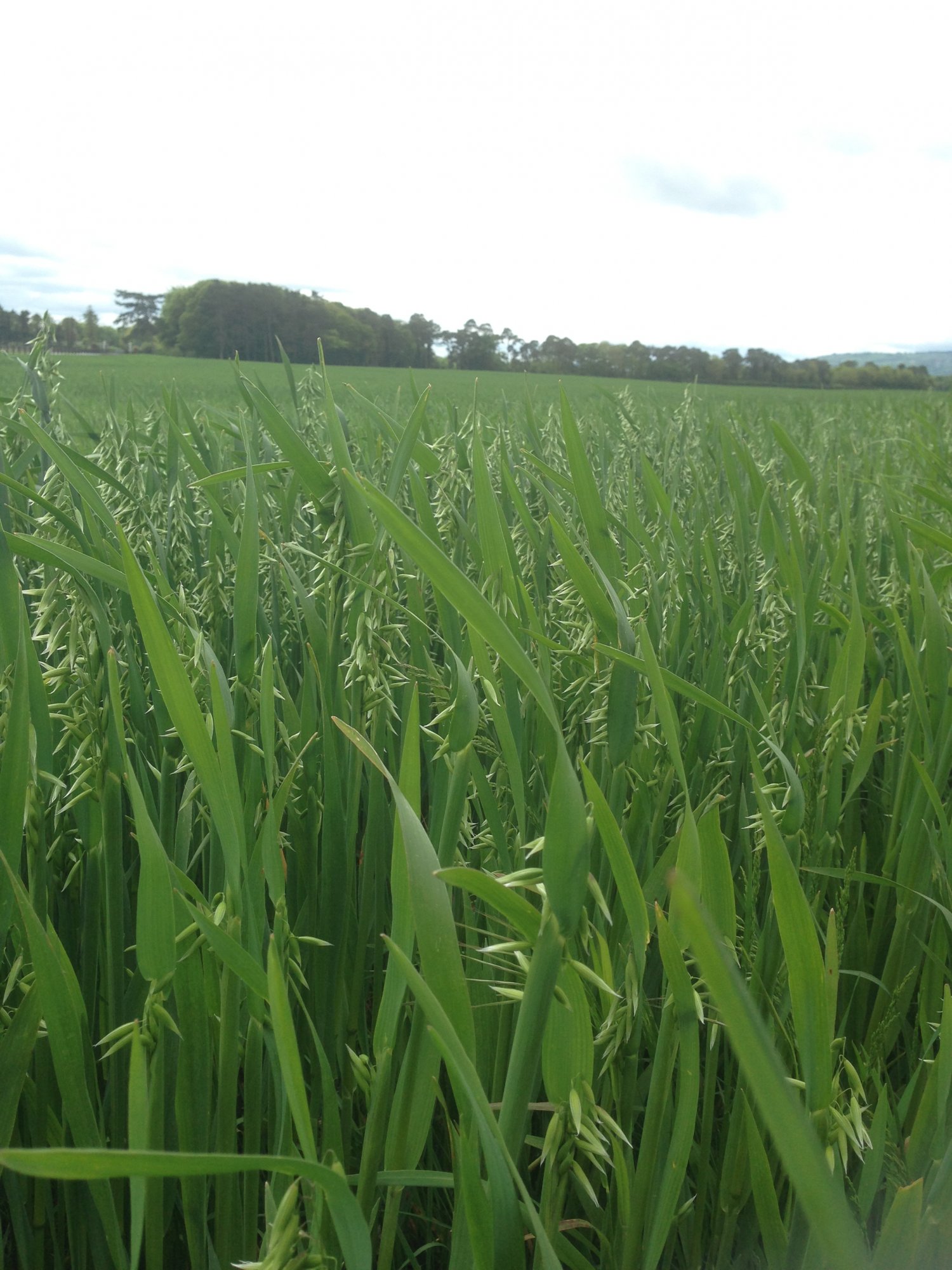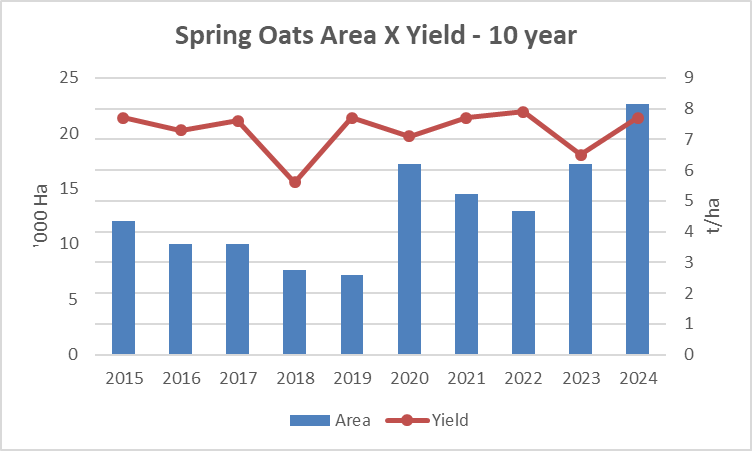
Teagasc Crop Report
Spring Oats Reference Guide
Spring Oats Reference Guide

To view the full report you must have an existing account with Teagasc ConnectEd.
Farmers sign in hereAlready have a ConnectEd account? Connected Client or Teagasc staff log in here
Spring Oats
The 10 year average area of spring oats is 13,000 hectares, ranging from 7,000 ha in 2019 to 23,000 ha in 2024. This variation is influenced by autumn planting conditions where the spring area complements the winter planted crop area for an overall crop area of ~25,000ha.
Yields depend on the growing season, with a target yield of 9.0 t/ha being achievable. The 10-year average yield is 8.6t/ha.

Interest in the consumption of oat grains has grown in recent years as oat grains have been classified as a functional food and recent studies have demonstrated links between oat consumption and reduced risk of coronary heart disease, diabetes, gastrointestinal problems and some cancers. Additionally, the composition of its protein fractions permits oats to be included in gluten free diets as long as there is no contamination from other cereals.
There are similarities between oats and other cereals but also quite stark differences in how the crop grows and responds to agronomy inputs. One of the most visible differences is the head of the oat plant, the panicle, which looks visibly different from the compact ears of barley and wheat plants. Oats do not produce tillers to the same extent as barley and wheat but oat panicles can have many more grains than the heads of other cereals, the number of grains per panicle can be adjusted by the oat plant over a wide range to suit agronomic and environmental conditions.
The oat panicle is shaped like a pyramid, broad at the bottom and tapering towards the top of the structure. The panicle is divided into a number of horizontal layers called whorls, most whorls consist of a number of branches coming from a single point on the upper stem. Oat grains are contained in structures called spikelets. Spikelets generally contain two grains, a larger primary grain and a smaller secondary grain.